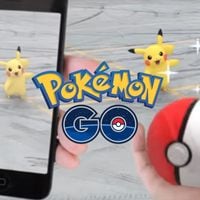Pokemon GO Review – Poor game, but a social phenomenon
Pokemon GO needs a lot of improvements. Many things are altogether missing from the game. But it’s already obvious that it will be one of the greatest successes not only in mobile gaming, but also in the whole video game industry.
The review is based on the AND version. It's also relevant to iOS version(s).
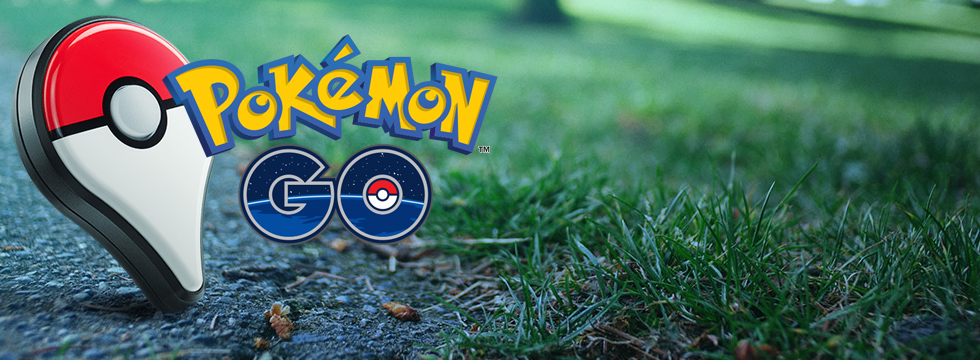
- A game that makes you go outside...
- ...and meet new people;
- First generation Pokemons (Charmander!);
- Catching rare Pokemons brings loads of fun;
- Prospect of great development of GO in the future.
- Poor tutorial; learning mechanics through trial and error;
- Elements that should be the foundation of a Pokemon game (and had been announced) are not there;
- Too few Pokestops and Gyms in smaller towns and outskirts;
- The game devours smartphones’ batteries and can freeze in key moments;
- Server issues that can cause a temper tantrum.
After several lean years, the Japanese giant Nintendo finally began to open up to new trends, and took the market of mobile games by storm. Thanks to this change of attitude, we’ve now got a second app – after not so well received Miitomo – dedicated to smartphones and tablets and utilizing augmented reality – Pokemon GO. During the first few weeks following the American release, the game gathered an enormous fanbase and became a phenomenon unlike any other in the world of video games. Catching Pokemons is truly addictive, but it can become boring pretty soon – apart from collecting the creatures and engaging in occasional fights for spots, there’s simply nothing else to do there. After the first bitter-sweet impressions, the time has come to rate the smash hit, and that’s not easy an easy thing to do – on the one hand, it’s a completely unparalleled experience, and the fanbase is overwhelmingly enthusiastic; on the other, the game doesn’t offer enough to engage the players in the long run, and can disappoint the long-time fans of mainstream Pokemon games.
What makes Pokemon GO an ingenious idea that didn’t work out as planned? Let’s take a look.
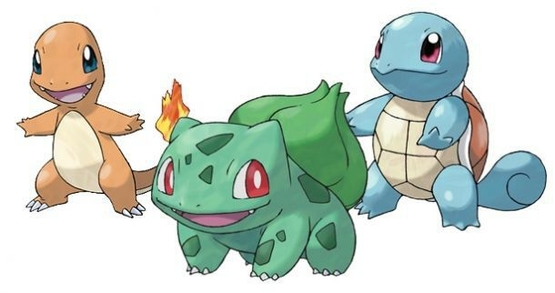
Just as in the cult Pokemon Red and Blue, we can start the adventure with Bulbasaur, Charmander or Squirtle (and after using a certain trick – also Pikachu). The Pokedex (index of Pokemons) contains 147 out of 151 first-generation Pokemons. The decision to include them in the game was perfect, since the first Pokemons are considered to be the best by many people.
Pikachu, I choose you!
Pokemon GO begins with the creation of player’s avatar. A moment later we choose – as befits a Pokemon game – one of the initially available Pokemons, and after a vague tutorial, we set off into the vast world, almost like Ash Ketchum did in the first episode of the legendary series. The game uses our phones’ GPS location and creates a map that is based on the real world. While wandering the area, we track Pokemons and acquire them for our collection by completing a small mini-game. The location of some of the Pokemons is determined by the element they represent, and some of them are much more rare than others. Unfortunately, those of you who hoped the get, for example, Pikachu, or other childhood favorites, will have to be very patient, since for the majority of time you stumble upon the same stock of Pokemons – dozens of other, more powerful ones, can only be obtained by the most stubborn players.
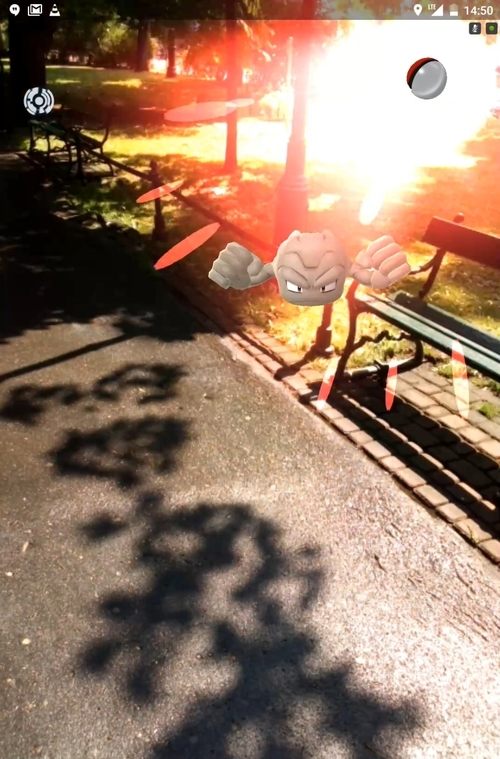
After spending more time with the game, it became apparent that the “regionalization” of Pokemons doesn’t always work as it should – we’ve caught one, which should be found near water, in our office. Just as in the other games of the series, the creatures are caught via Pokeballs, which have to be “thrown” at the encountered Pokemon. During the game, in the lower-right corner of the screen, the Pokemons that can be found in the area are shown, and the icon with paws next to them represents the distance that separates them from the player. One or two icons mean that the Pokemon can be just around the corner or in the area, but three (which is the case most of the time – especially now with the bugged version of the app) can send you on a goose chase.
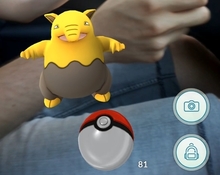
When the process of “catching ‘em” begins, the app shows the view from the camera with the Pokemon added on top of it. Throwing the Pokeball into a size-changing circle around it means it is caught – a bonus for accuracy can also be received. If you don’t like this system for some reason, you can quickly turn augmented reality off, and the background will change. The mechanics of catching Pokemons aren’t explained, unfortunately – the fact that we can curve Pokeballs is something we’ll have to learn from a buddy who found out by chance or from the Internet.
The Pokeballs are not unlimited. They can be acquired, along with other useful items such as potions, in Pokestops, which are usually located near monuments or other characteristic spots in cities. These could be churches, distinctive murals, or statues – points of interest, in short. The places where Pokestops can be found are not coincidental – they match the locations from other game by Niantic – Ingress, a more complex game working on a similar premise, set in a science-fiction universe. Finding a rare Pokemon in your neighborhood near a mural that you had no idea was there is a very cool experience. The fact that you have to explore the real world to play it is the game’s best feature.
For the glory of Team Rocket
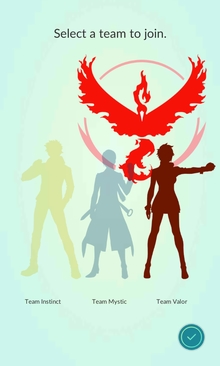
Choosing a faction is mostly a cosmetic decision so far, but it’s worth pointing out that not many players choose the “yellow” team (at least in my area), which makes it much harder for people from Team Instinct to capture Gyms. It’s not a very big problem in densely populated areas, but in the smaller towns they don’t have it easy.
The players are awarded for gathering subsequent monsters with experience points, and after reaching level five, we can join one of the three factions. Their symbols are the three legendary majestic birds from the first edition of the series. There is yellow Team Instinct, blue Team Mystic, and red Team Valor. The colors are pretty important, since the Pokemon Gyms, where players can duel, are painted in these three colors. These places feature one of the most important mechanics of the game – Pokemon duels. After assembling a strong enough set of Pokemons, the player can challenge another team and take their turf – depending on how many attacks a given Gym has survived, it will have a certain number of prestige points, which translates into the power and number of the Pokemons defending it. Some of these places can seem impossible to conquer, but people on Facebook have already started setting “raids” of sorts: a group of players from one faction goes for a walk and takes over a hostile location.
The combat itself is much less tactical than in the previous parts, and mostly requires dexterity; dodging at the right time and quick tapping on the screen – this is what helps your Pokemon win. Unfortunately, the game never reveals how the special attacks work – and they can make combat much easier, as they are based on the principle of the elements. Choosing the right Pokemon can allow you to win against a much stronger opponent. Same as on GameBoy – a fire attack considerably weakens a leaf Pokemon, and a stream of water is every fire creature’s nemesis. Still, you can forget about the depth of the duels from other games of the franchise – the combat in Pokemon GO is supposed to be quick and easy. That’s exactly the case in the beginning, but in the long run they prove shallow, which can render them boring both for the new players, and the hardcore fans of the franchise.
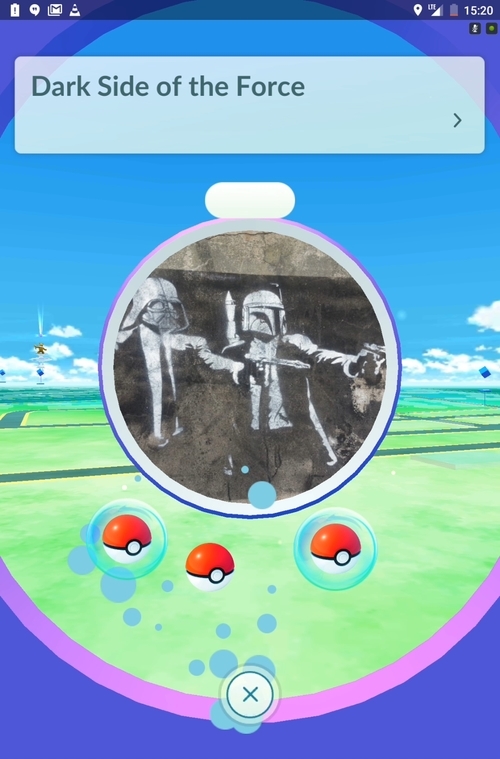
Catch ‘em all... once you learn how to do it
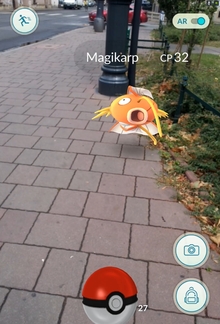
One of the key aspects of Pokemon games was always the evolution of the creatures, and that’s also the case here. It is possible to catch Pokemons that are already developed, but in most cases you will just increase the CP of those you currently own, so that they can gain higher levels. Some Pokemons require more work to get them to evolve – that’s a nice reference to the series. While those less powerful need 100-200 points for transformation, a Magikarp, for instance, won’t budge until you have 400.
The lack of a proper introduction to the game is probably the greatest disadvantage I noticed. Too many things have to be discovered by trial and error, because the player simply doesn’t understand how some mechanics work. Hence the players have no idea that catching already owned Pokemons is very profitable, since they can produce Candy, which is used for developing Pokemons. The Combat Power (CP) of the players’ Pokemons is also determined by the player’s level – the bigger it is, the more CPs can a Pokemon produce.
Another enemy of fun in the world of Pokemon GO is the battery life of our devices, as most phones go flat after approximately two hours of running the app. In this situation, equipment with a stronger battery and strong powerbanks becomes especially appreciated, and it is, unfortunately, a compulsory purchase for the new generation of poke-maniacs. Although the game has already launched on the old continent, there are still moments when the servers are acting up. The unexpected scope of the game's success turns out to be a two-edged sword in the hands of Niantic – while the social interaction with random players we have just met and the exploration of an alternate version of our world bring loads of fun, it quickly evaporates when, during a pleasant evening stroll, the game denies us login a few (if only!) times in a row. It is obvious that Niantic is working on the solution and the enormous popularity of the game will sooner or later cause the servers to become more reliable. Currently, however, the app's unpredictability can spoil a lot of wonderful fun, and sometimes it's hard not to fall under the impression that the game worked better in the previous version, and before the launch in Europe. It is also worth noting that some features that were to be included in the game, such as trading creatures with other players, are not yet there, though this state of affairs is said to change in the future.
The game loses some of its pace in smaller towns and on the outskirts of cities, where landmarks and historic sites are less common. For example, in the fifteen minutes I spent on my way from work I came across only three pokestops. Let’s compare it with the city center, where I passed by seven points in just a few minutes, quickly resupplying my pokeballs and passing by lures – the latter make it easier to encounter the creatures for a limited amount time. Luckily, Niantic kept its word and is currently remedying the situation in the regions that are poorer in various points of interest, recently allowing us to report good locations for pokestops directly to the developers. While some areas are still reminiscent of a Mad Max-esque wasteland, no doubt die-hard fans will quickly have them filled with what they need.
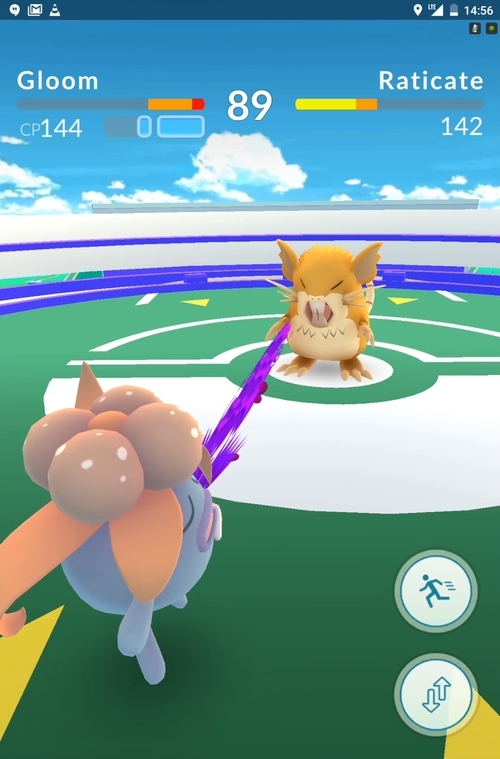
Being the best is never easy...
Pokemon GO is a unique gaming phenomenon and I doubt there is any other production that would prompt us to go outside and meet other people in such an effective manner. The average age of the players tells a lot about the nature of this phenomenon – those are mostly Millennials, people who grew up watching the TV series and playing the first two generations of the original game, but had no contact with Pikachu and company ever since. Those of us whose last encounter with pocket monsters was through the fairly recent Alpha Ruby and Omega Sapphire will be quicker to drop nostalgia goggles (assuming we have any) and recognize the shallowness of the game and the annoying bugs plaguing it. In addition to the catching itself and taking over gyms, at the moment there is not much else to do in the game. Simply “catching ‘em all”, which has always been the main quest for the fans, will be a virtually lost cause that no one will be able to achieve for a long time to come. Apart from the lack of clear explanation of most of the game's mechanics and the capricious servers, one more thing that spoils the fun is the fact that the game likes to freeze and force us to restart the app. In the majority of cases, the only inconvenience is a waste of time, but sometimes it can spoil a rare catch that we've spent hours looking for.
Pokemon, it’s you and me. I know it's my destiny
As a longtime fan of pocket monsters, I must admit, though with a heavy heart, that Pokemon GO is an unfinished product and the creators have a lot of work left to do. Thus, a fair evaluation of the application is very difficult, as sometimes it can be extremely fun... until either the servers or the phone battery causes some problems. Traversing your own city and meeting other players and lovable creatures provides tons of entertainment – until something happens.
At the moment Pokemon GO is nothing more than a promising idea, one that's unable to fully spread its wings, but I keep my fingers crossed for it to eventually happen. Huge community involvement and nostalgia certainly testify to the power of the brand, but if Niantic fails to improve the game, they won’t be enough to keep this title alive. As a social experience and an urban game of sorts, the mobile Pokemon game is a unique creation. Still, unique as it may be, it's a rather average game right now. I hope that it will change soon.
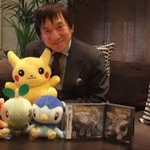
Pokemon was brought to the world by Satoshi Tajiri, the co-founder of Game Freak. The idea for collecting and training pocket monsters came from his fascination with insects, which he passionately collected in his youth. When the forests in his hometown of Machida near Tokyo were cut down, Tajiri was terrified that the next generation will be unable to experience nature as he did as a young man. That's why he wanted to create a game through which they could learn about nature and animals. The first generation of Pokemon – Pokemon Red and Blue debuted in Japan in 1996, with the second gen following three years later. Currently there are six generations in the main series, and the next one will make its debut on the 3DS console later this year, including the twin titles Pokemon Sun and Pokemon Moon.
Pokemon GO
Pokemon GO Review – Poor game, but a social phenomenon
Pokemon GO needs a lot of improvements. Many things are altogether missing from the game. But it’s already obvious that it will be one of the greatest successes not only in mobile gaming, but also in the whole video game industry.

